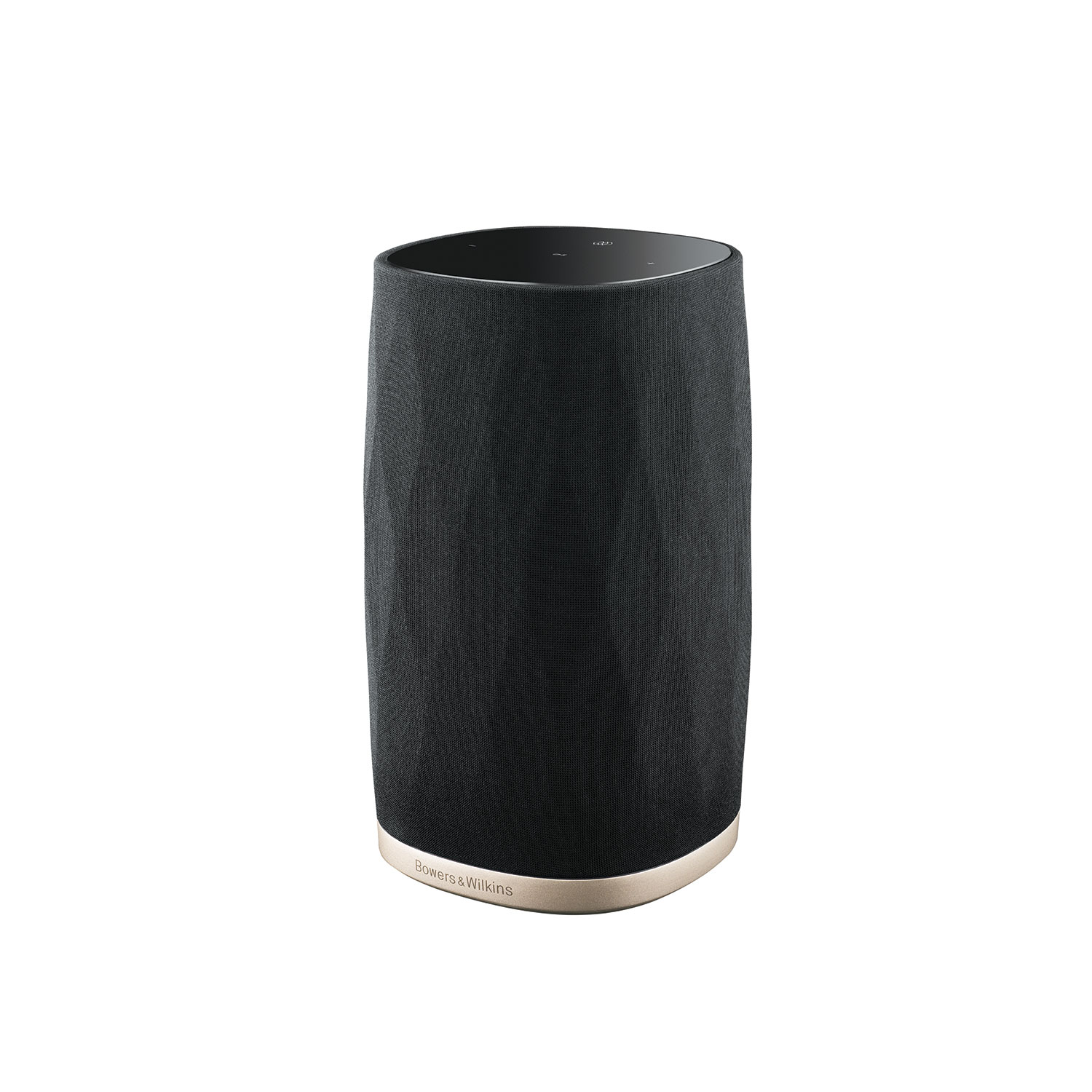The English high-end manufacturer Bowers & Wilkins entered the multi-room system family segment relatively late with its Formation series, and its philosophy differs fundamentally from the top dogs such as Sonos and Co.
The number of compatible components is limited, the system is not open to other streaming components and relies on only a few playback options. With the unconditional goal of higher sound quality, the prices for the system speakers are significantly higher than those of competitors, and with the exception of the smallest model Flex, they are also relatively voluminous.
On the other hand, Bowers & Wilkins has succeeded in creating a truly unique design line: all speakers except for the Duo stereo monitors are surrounded by a fabric-covered diamond lattice reminiscent of the top models from Bang&Olufsen.
The closed system with selected feed options
The only classic one-box system with virtual stereo in the Formation world is the Wedge, which is more expensive and significantly larger than all its competitors. If you like it more compact, you’ll have to plan for the Flex mono speaker, which can be coupled to form a stereo pair or redefined as a surround speaker. Provided you are prepared to buy a second copy or a matching soundbar.
There is a subwoofer in the portfolio as well as a soundbar for the TV, but the latter also takes up considerably more space than usual. On the other hand, Bowers & Wilkins has designed a pair of flawless stereo active monitors as part of its multiroom series, the Formation Duo.
The technical background to the somewhat closed impression is the establishment of a proprietary wireless network between the Formation components, comparable to the earlier Sonos generations. This should ensure optimum interference immunity and minimal latency between different zone speakers.
The only electronic component in the Formation universe, the Formation Audio, promises to open up the classic hi-fi world. It acts as a zone streamer, A/D converter and Bluetooth hub, a kind of gateway for external music signals into the multi-room environment and back to the classic hi-fi system.


Software and playback: B&W Formation App, Roon and streaming services
Unlike other manufacturers, who pack an entire universe into the app to control their multi-room speakers, the Bowers & Wilkins app is primarily an aid to setting up the system, although some streaming services are also integrated. If everything runs smoothly, playback via one of the popular Bluetooth (Apt-X HD) or Airplay 2 protocols is the usual method of choice.
Spotify Connect as well as Tidal, Qobuz and Deezer are integrated into the streaming services. However, Apple Music and others can also find a way to get music into the speakers via the Airplay 2 detour. There is also an option from the Amazon Music app, although this service does not appear in the Bowers app.
For some users, however, the full compatibility with Roon may outweigh this minor disadvantage. The resolution is limited to PCM 96/24, which offers sufficient hires reserves. This applies to the Formation Audio as well as the Wedge, the Bar, the Flex and the Formation Dua stereo set. They are all Roon ready and are mentioned on the Roon partner website. But this does not apply to the Zeppelin Gen 4!
The proprietary mesh wireless network is designed to deliver maximum stability and zero latency with this stream width; higher resolutions are downscaled accordingly. Future users should think carefully about playing music outside of this biotope, as none of the stereo system speakers have any other inputs. Only the Formation Bar accepts optical signals from the TV (but no HDMI), the Formation Audio zone streamer is the only one with an analog input.
The future of the Formation System
Bowers&Wilkins fans have had to wait quite a long time for hardware enhancements in the Formation range. The lack of an inexpensive, portable mini speaker and a compact virtual stereo solution in particular is likely to have led many a multiroom fan to other systems.
The manufacturer has now launched a new version, Generation 4, of its popular Zeppelin one-box system. We have already tested it here and can only give it top marks for sound quality. Small drawback: The Zeppelin Gen 4 does not understand Roon, the only way to play Roon signals is via an Apple device and the detour Airplay 2.

The Zeppelin is an exciting alternative to the B&W Wedge, at least in terms of size and price, even if it is not yet a compact or truly affordable virtual one-box speaker. Although it is compatible with the Bowers & Wilkins app and can also handle more streaming and assistant functions than the Formation members, the current software version does not provide for full compatibility with the system with all multi-room capabilities.
The Bowers & Wilkins Formation System is ideal for these users
B&W occupies a special position among multi-room systems, as the manufacturer pursues a rather minimalist policy in terms of digital features and model diversity. If you want to keep your system flexible and, for example. with the integration of a record player or the use of Google Cast will quickly reach its limits. Users of Apple Music, Spotify or Roon who are considering a particularly elegant and stable multi-room system with the option of upgrading to really high-end stereo active speakers could still find their favorite here.
You have to have a certain love for larger components, especially the wedge and the soundbar are not the most compact in their class. In return, they also promise a correspondingly more voluminous and audiophile-tuned sound. And a truly unique design.
All components of the Bowers & Wilkins Formation System at a glance
System-Onebox:
- Bowers & Wilkins Formation Wedge (Stereo)
- Bowers & Wilkins Formation Flex (Mono)
Stereo compact loudspeaker
- Bowers & Wilkins Formation Duo
Soundbar
- Bowers & Wilkins Formation Bar
Subwoofer
- Bowers & Wilkins Formation Bass
System Onebox with limited multiroom/streaming features:
Bowers & Wilkins Zeppelin Gen4 (Test)















